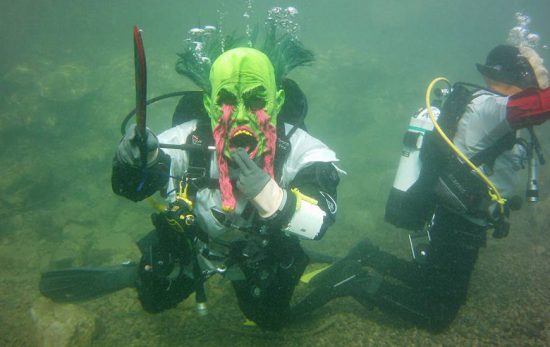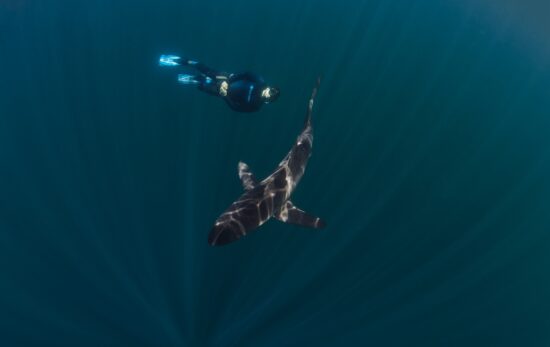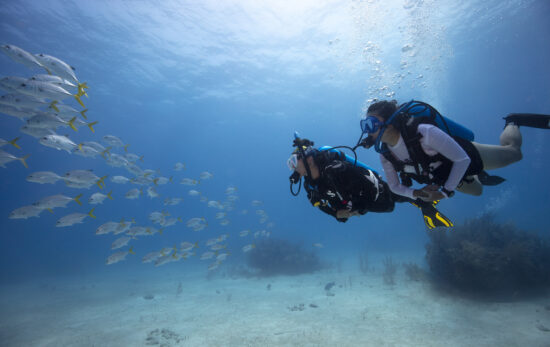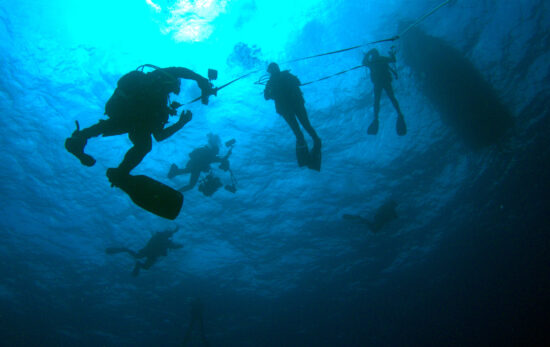Rich Morin knows a lot about dry suits. Not only does he perform search-and-recovery operations under the ice for local police teams, he also teaches loads of Ice Diver certification courses through his PADI Five Star Dive Center, Rich Morin’s Pro Scuba Center in New York.
According to Morin, dry suits are a necessity for divers in his area who want to get as much time in the water as possible. “Because, we have nine months of winter and three months of bad sledding,” he says.
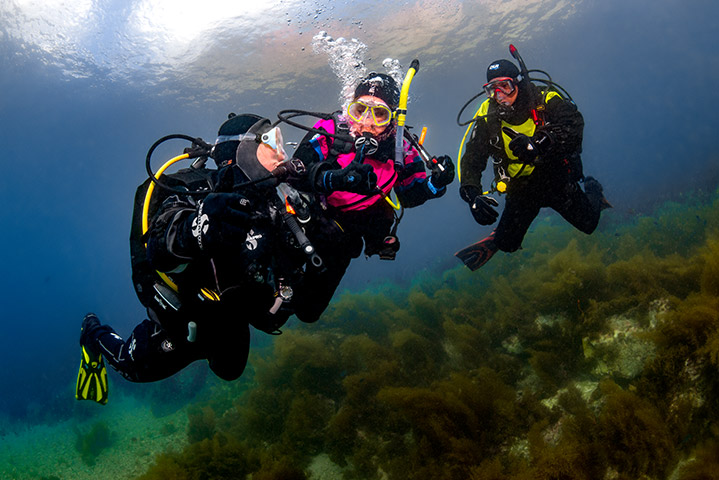
If you’re not already Dry Suit certified, here’s what you need to know to get started:
6. “The skills are nothing you can’t do,” says Morin.
One of the skills students must complete is to remove and replace the scuba unit and weight system.
“It’s something we’ve all done a million times, only now it’s a bit more challenging because of the bulk—and because you’ll need to disconnect and reconnect the inflator hose to the dry suit inflator valve, typically found at the chest.”
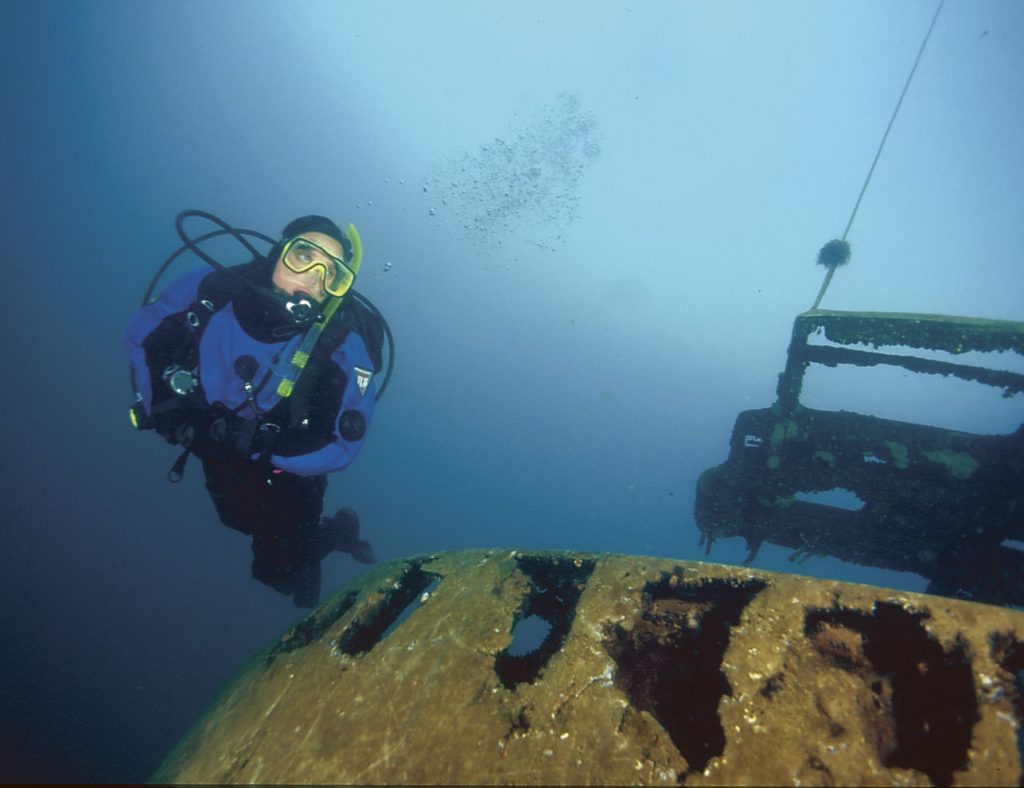
5. Yes, you will be upside-down in the suit at times, but that is part of the training.
Just as you did when you first got certified, you’ll learn to maneuver in a way that works with the equipment you’re wearing.
When you find your feet pointed skyward, you have a couple options. If you’re closer to the surface, ball up. Teaches Morin, “Tuck into a ball, then do a sit-up to be upright and vertical.” If there’s enough depth below you, kick down. “Swim down and then get horizontal—you’ll end up either on your belly or back, and if you’re on your back, just roll over,” says Morin.
4. Alpaca socks keep your feet the warmest.
“We’ve tried it all, and found that alpaca wool socks underneath the booties the manufacturer supplies do extremely well at keeping feet toasty warm.”
In addition to the socks, you’ll typically be wearing polypropylene t-shirt and pants. Then a fleece layer— shirt and pants. Then the undergarment/s supplied by the dry suit manufacturer.
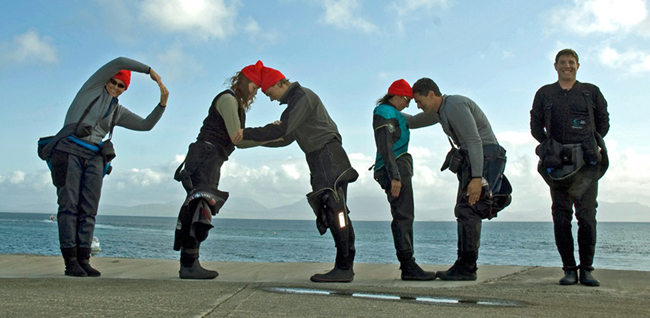
3. Everything happens in slower motion when it comes to buoyancy in a dry suit.
Air doesn’t escape the suit as quickly as it does a BC. A BC has no resistance thanks to the urethane coating. But, when you’re bundled up in layers of clothing under the dry suit, says Morin, “It takes time for the air to travel through the undergarments.” And so, he reminds divers to “really take your time adding and subtracting air—do it in small amounts but frequently.”
2. You have to move periodically to stay warm.
Your body heat will warm the air in the suit, but you’ll need to help it circulate. “If you’re always in a face-down position while diving, your back stays toasty but your belly gets cold, so every once in a while you have to roll to move that air around,” says Morin.
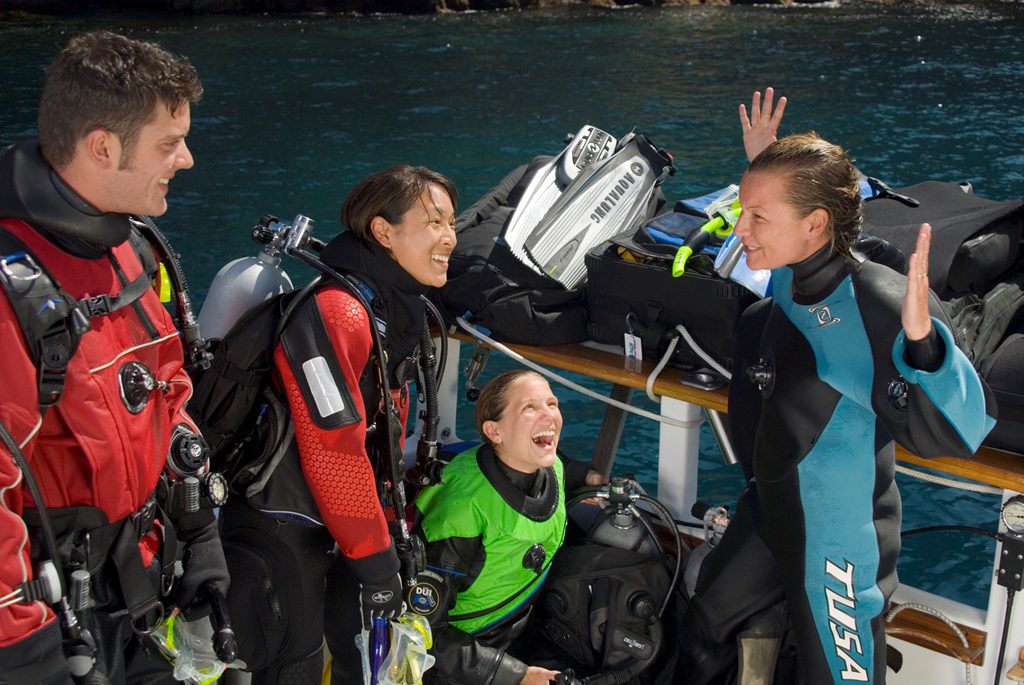
1. It’s easier than you think.
“Unfortunately, a lot of dry suit divers like to dwell on the complexity of the dry suit,” says Morin. But there’s really no merit to this initiation-like speech. The whole course is typically taught in one day, with one confined-water session and two open-water dives. But that length of time should speak to how easily the skills are for most divers. Says Morin, “In fact, the number one thing that surprises people about dry suit diving is how easy it is.”
Ready to get started today? Enroll in the Dry Suit Diver course. Get started at home today with PADI eLearning or find a PADI Dive Center or Resort to begin your in-person training.
If you are looking for a travel adventure, visit PADI Travel to book a cold water dive excursion today.
